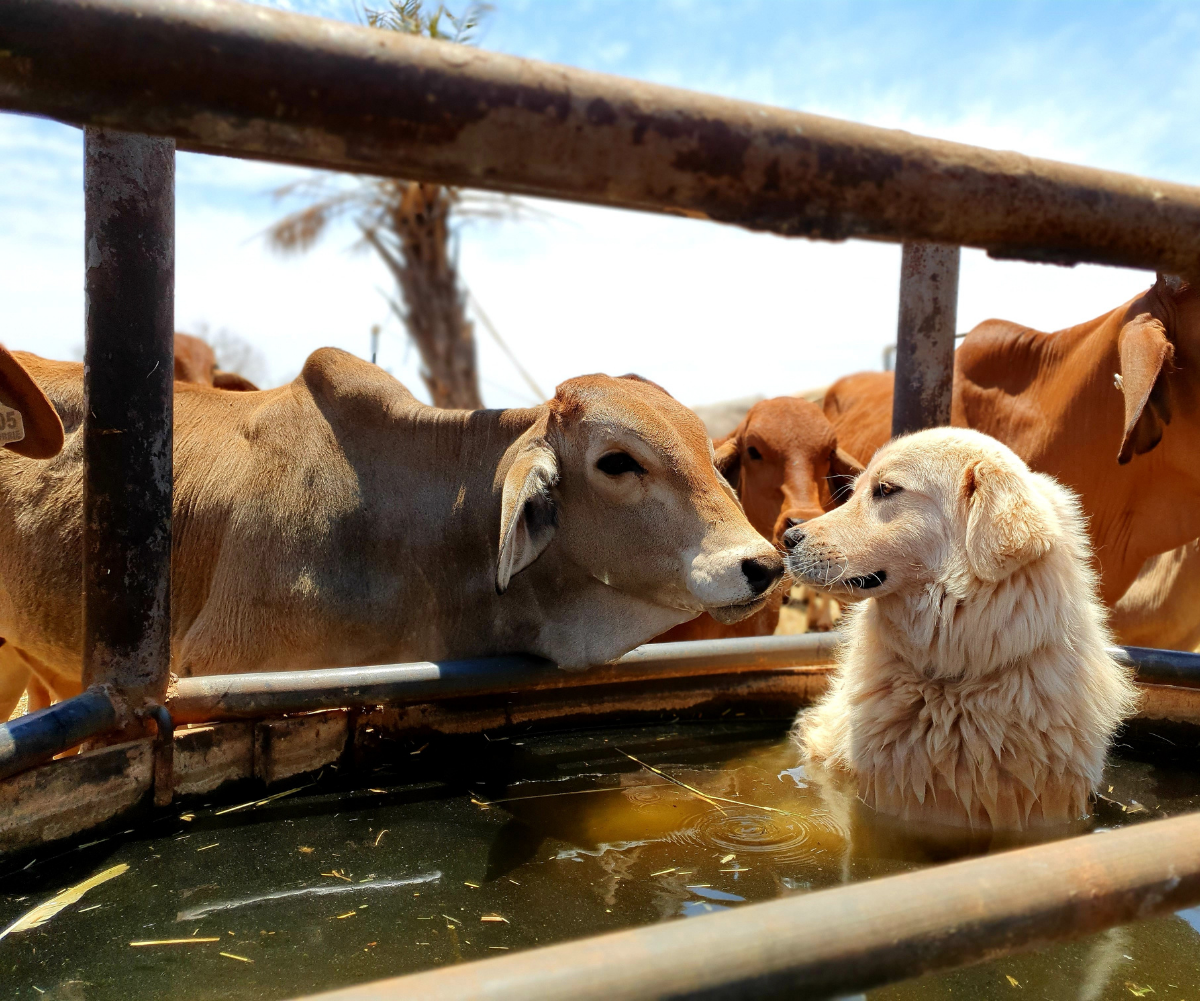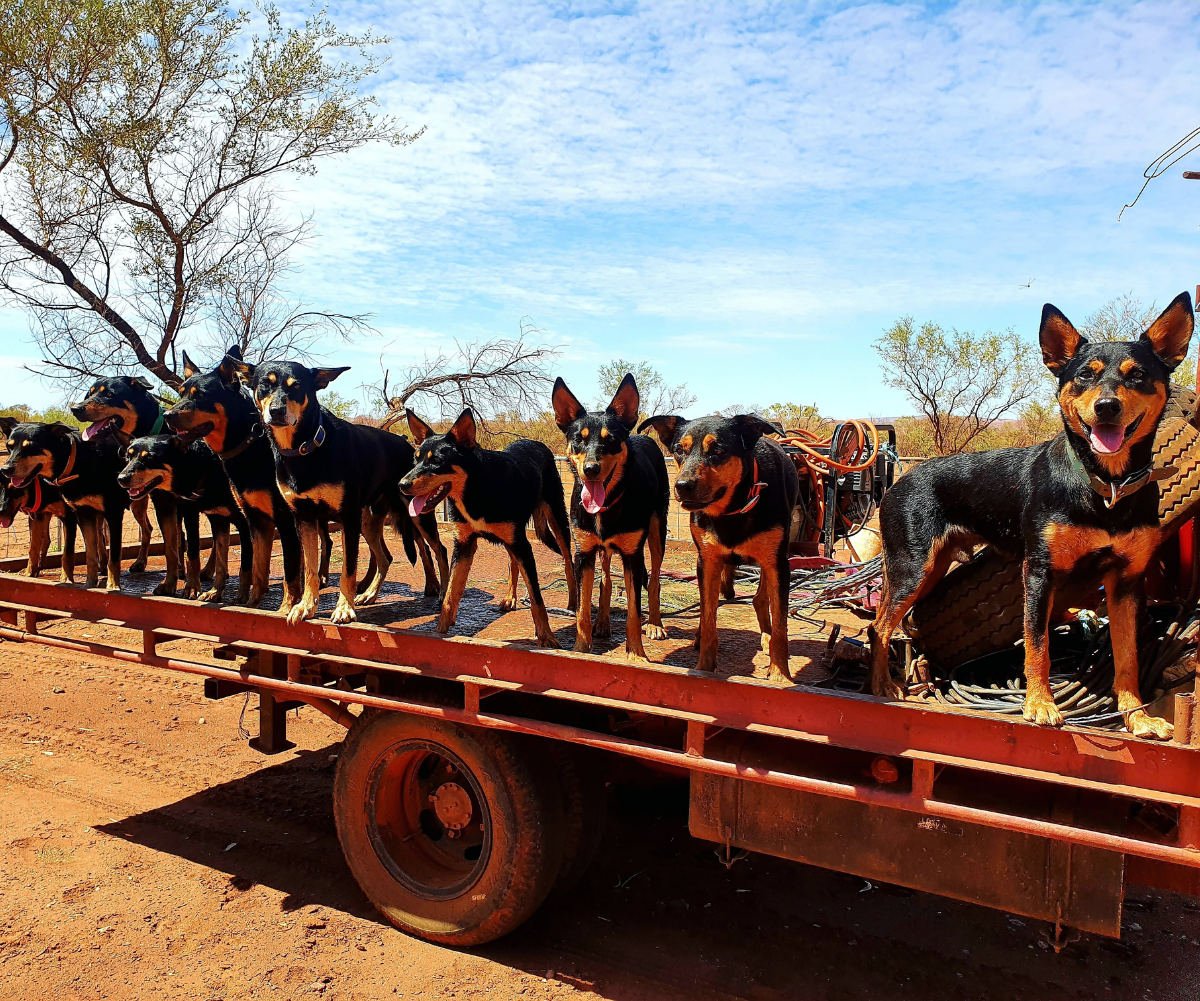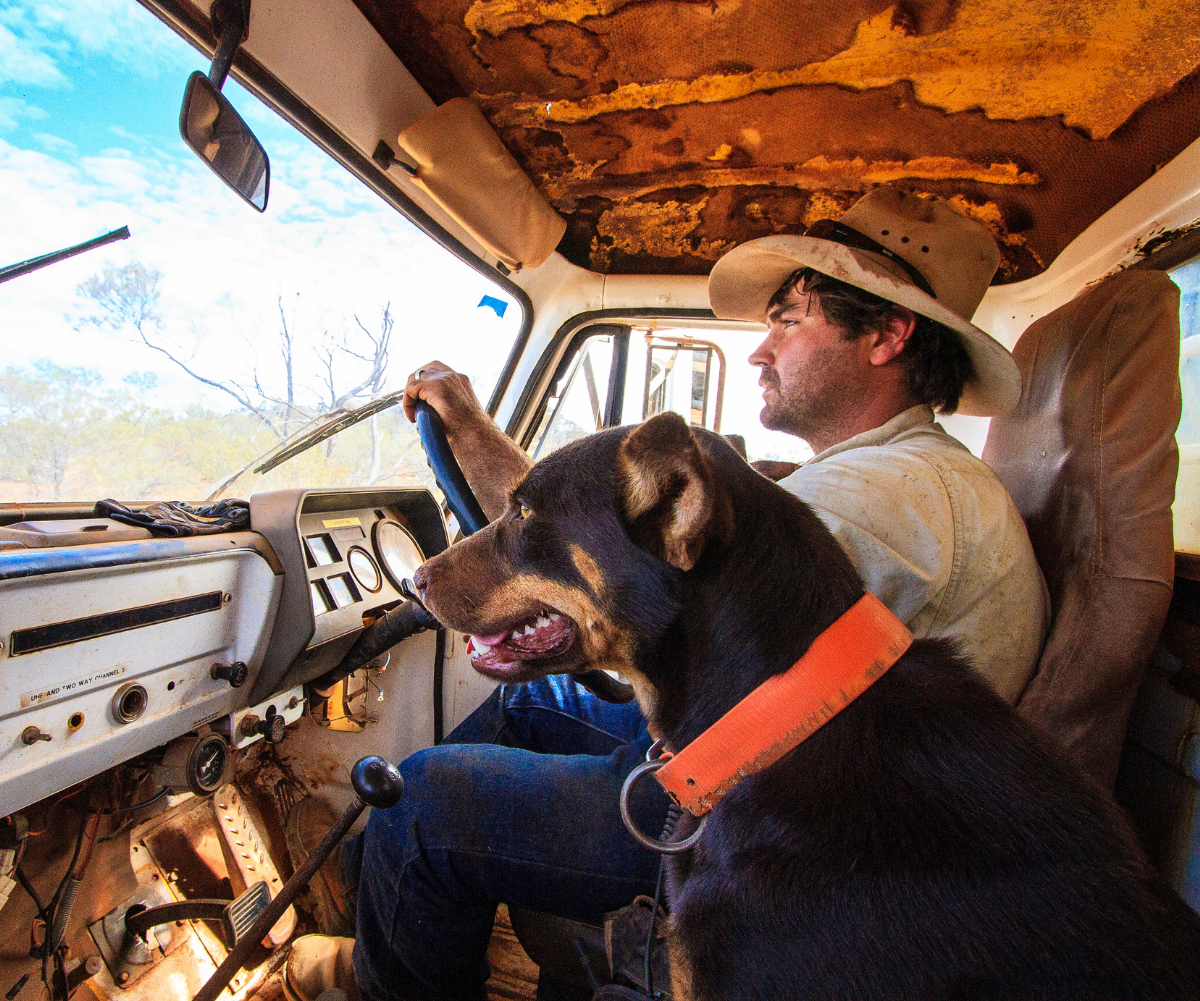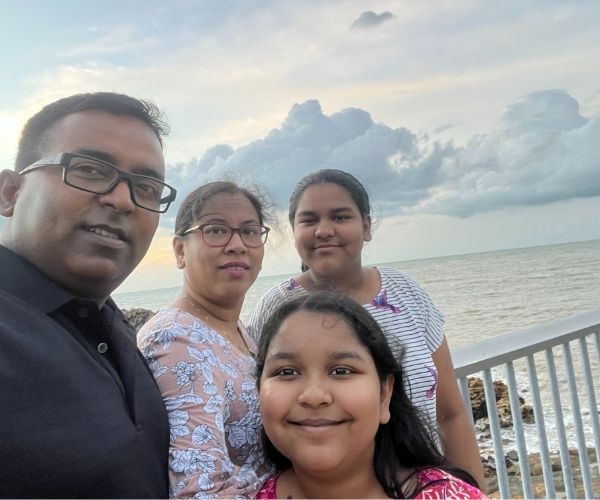Aticia Grey, 34, from WA, shares her pawesome story!
As the sun rose over the horizon, the whine of the helicopter firing up broke the morning silence.
“Let’s go mustering,” my dad said.
Full of excitement, I was determined to be in the thick of it as we began mustering our herd of Brahman cattle on our vast property in the Pilbara region, WA.
I was five-years-old and adored growing up on the land, along with my brother, Murray, seven.
As graziers, Mum and Dad bought the remote Glen Florrie Station off Dad’s parents in 1993. It spanned 500,000 acres – our driveway alone was 88km long.
As a barefoot kid, covered in dirt, constantly plucking prickles from my feet, my family called me Speedy Spider Legs as I’d dart across the lawn to escape my brother’s chase.
I thought station life was wonderful as we explored rocky hills and stunning gorges with creeks and rivers winding through.
When I wasn’t on foot, I was zooming around on my motorbike and looking after a menagerie of animals.

I was surrounded by animals.
(Image: Supplied)I’d always loved dogs. Our first was Sheba, a German shepherd, then there was Cherry, a beautiful cream-coloured corgi before I found Joy, my first kelpie.
I considered school a drag, learning through the School of the Air, as it interrupted my mustering fun. I went to boarding school in Perth in Year 8 and felt so homesick, but my strong work ethic helped me graduate.
In 2004, Mum and Dad split up, but continued to run the business together as we expanded with another farm. Soon after, Murray stepped up as manager of the station.
Outback life was magical, but in my late 20s, I longed to travel so took off to explore Australia in the summer months before returning to Glen Florrie as Murray’s wing woman in the busy period.
Murray loved the country, but he and his partner, Adele, eventually married and started a family.
Moving away to our southern farm, they gradually handed me the reins as manager. The responsibility was enormous.
In 2019, an unforgiving drought hit; our breeder cattle had to be sold or moved onto greener country, until the rains returned. Hundreds of calves that had no chance in the punishing heat had to be handfed.
Despite the challenges, I had ideas for the future and wanted to introduce regenerative agricultural methods, managing the grazing of our cattle to maximise grass production and give the land a chance to recover.
Essential to my plan was the use of working dogs.

I loved all my dogs.
(Image: Supplied)A few years before, I had attended the Neil McDonald Advanced Livestock and Working Dog School.
Watching dogs move calm and composed stock under Neil’s guidance, I was inspired. The dogs and cattle had developed an understanding that meant they efficiently lived and worked alongside each other. I wanted to see this at home.
“Can you get together a team of dogs for me?” I asked Neil.
He found me four kelpies – Diddy, Ang, Julia and Flora, and a friend gifted me a pup called Zen. It was my chance to steer the station in a different direction.
Family were supportive but sceptical as I started training.
Bonding with the dogs was important but so were boundaries. I was the boss and my dogs had to have good manners and respect for me, each other and the livestock.
Starting with dogs who already knew how to work stock was a huge advantage and after our cattle adapted, the dogs were soon moving mobs around.
Over time our cattle numbers increased as did my team of dogs, who mustered them without creating panic.
During the drought, as we destocked and sold cattle, buyers were impressed by how calm, orderly and well-behaved they were.
“I vowed never to buy this breed again because they’re so hard to handle,” one stockman said. “But these are so well-mannered, I’ll be purchasing yours again.”
Time passed and my dog pack grew. I bred, sold and sadly lost dogs but each one was loved unconditionally.
In 2019, I met Adam, 30 – a stock truck driver who was a constant support, especially when we had gone so long without decent rain. Despite destocking, we held onto a small mob of cattle to keep the dogs working.

The dogs love their life.
(Image: Supplied)In the peak of the drought I was approached by ABC TV to be in a show called Muster Dogs – a series that would feature five farming families training up new kelpie pups – but with the drought I turned it down.
The next year, though the drought still hadn’t broken, the producers contacted me again and I committed.
Cuddling the black and tan 12-week-old kelpie pup that I had to train, I felt an instant connection and called her Gossip Girl. Soon, filming commenced.
Part-way through the documentary, the rains finally came. Slowly, the land began to flourish. Our cattle returned and we were once again able to look towards a more promising future.
Gossip Girl’s now 18 months old and I’ve trained her to be a fabulous muster dog. I’ve also added to my brood with a little six-month-old pup I bred called Carrie. The eldest is Jasper who’s eight, so I have 12 kelpies and six guardian maremmas.

The pups are so cute.
(Image: Supplied)Through all the ups and downs, I wouldn’t trade my life for anything.
I’m proud to have secured the future of our family farm, but I couldn’t have done it without my working dogs.
They’ve helped me find my independence, running my own business alongside my family’s. But most of all I’ve found my passion with my dogs. No matter where I am in life, as long as they’re by my side, I’m home. And that’s the greatest gift of all.

